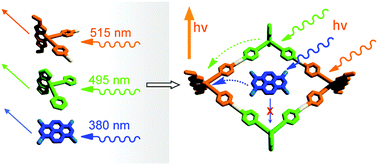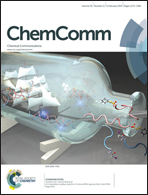Highly efficient and unidirectional energy transfer within a tightly self-assembled host–guest multichromophoric array†
Abstract
The coordination-driven synthesis of a rhomboid cavitand composed of two different Bodipys and its inclusion complex with 1,3,6,8-tetrasulfopyrene via ionic self-assembly was established by X-ray crystallography. Highly efficient and unidirectional intra-host and guest-to-host energy transfer was demonstrated by femtosecond fluorescence spectroscopy.


 Please wait while we load your content...
Please wait while we load your content...